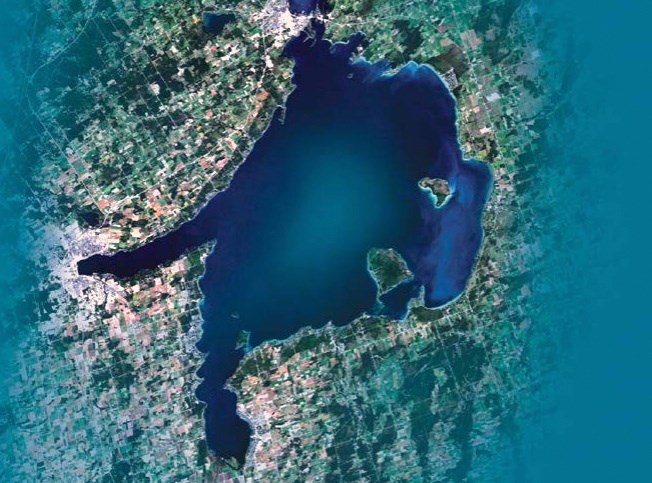A pilot project in Innisfil that hoped to reduce sediment and phosphorus released into Lake Simcoe was a success.
A delegation from representatives of the Greenland Group of Companies was invited to a recent council meeting to share the results as the town continues to look for ways to improve its sediment and phosphorus management and reduce negative impacts downstream.
The pilot was undertaken in the Sleeping Lion development in 2020, utilizing three of the town’s stormwater management facilities (SWMF). The town retained Greenland to demonstrate the effectiveness of advanced sedimentation techniques (AST) using products from its Clearflow subsidiary.
The company installed gel flocculant blocks in the storm sewers upstream from the SWMFs, which react with the “very fine particles” in the stormwater, explained Kirsten McFarlane, an environmental analyst with the Greenland Group of Companies. The particles bind the sediment together, allowing the finer sediment to settle more quickly in the forebays that receive SWMFs.
As well, gel treated jute was used in two overland flow swales upstream from one of the facilities, she continued. This functioned as an “erosion control blanket.”
Water samples were collected in two spots: upstream from the gel flocculant and downstream from the stormwater facility. If the Clearflow products acted how they were designed, they would reduce the discharge of sediment to the watercourses downstream from Sleeping Lion and toward Lake Simcoe.
There was a “clear improvement” town staff reported.
“Per the SWMF design, a total suspended solids removal efficiency of 36.2 per cent and 79.7 per cent was expected for SWMFs 4 and 7 respectively without AST,” the staff report stated. “However, actual removal efficiencies were calculated to be 74 per cent and 95 per cent with AST installed.”
SWMF 7 saw its removal efficiency improve by three per cent over expectation, while SWMF 4 saw an improvement of 20 per cent. Staff indicated the improvements seen were minor, during most of the small events sampled when compared to the as-designed efficiencies, however a large reduction of approximately was calculated during the Aug. 2, 2020, storm.
During that storm, 95 mm of rain fell over the course of 19 hours. The removal efficiency recorded was 74 per cent, compared to the as-designed removal efficiency of 36 per cent.
Staff suggested this process could be utilized in future developments as a way to keep excessive sediment and phosphorous out of Lake Simcoe. McFarlane explained the lifespan of both the gel flocculant blocks and the treated jute depend on the respective volume of sediment and water flowing over them.
With an average maintenance cycle of approximately three months, she suggested three cycles per year would be necessary for each installation, accounting for low water flow and freezing during the winter.
Coun. Ken Fowler was happy with the results but had concerns with what was still going into the lake. Jerry Hanna of Clearflow suggested he needn’t worry
“Is there a residual? No,” said Hanna, who added this was a common question he faces when explaining the science behind the GEO flocculant blocks. Further studies have been done, in conjunction with the federal government and Canadian universities to showcase the safety.
“It’s totally, 100 per cent safe for fish and mammals and there are no downstream effects from this.”
The cost to implement the program beyond the pilot was not discussed, however, a cost-benefit ratio of 1.44 was touted by Greenland when compared to site stabilization seeding and nutrient benefits over the 50-year time frame of an SWMF.
When questioned by Coun. Rob Nicol if the cost could be recovered by development charges, town staff vowed to review but suggested such a project could be a benefit to both the municipality and developers.
